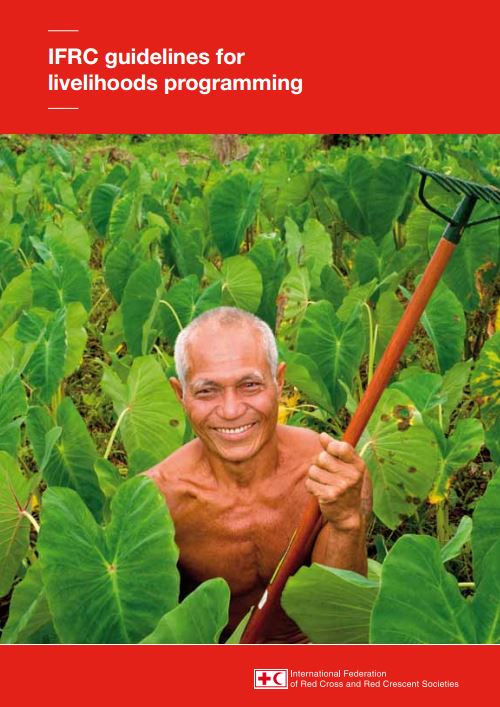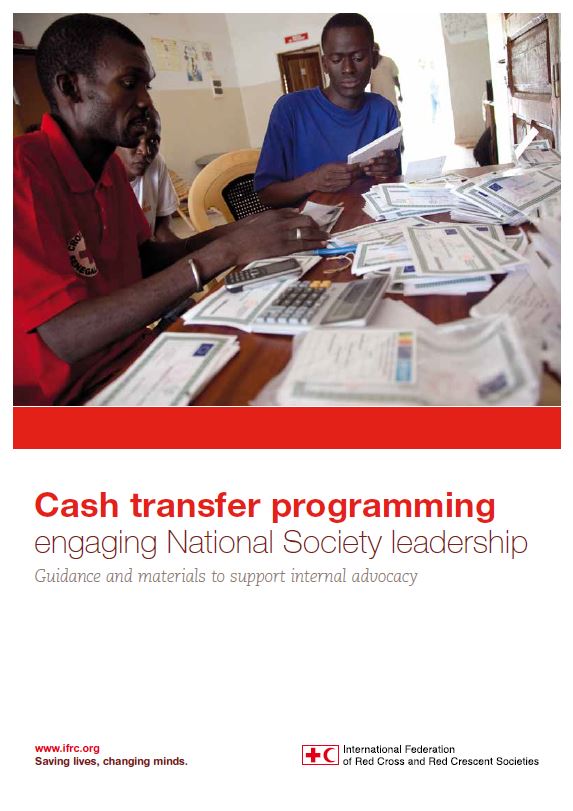Improving Lives and Livelihoods Through Cash Transfer: A Humanitarian Assistance Project in Maungdaw Township, Rakhine-Myanmar
The outbreak of violence in Rakhine State of Myanmar on 25 August 2017 resulted in one of the largest humanitarian crises in recent history. An estimated 728,000 people fled to Cox’s Bazar in Bangladesh and thousands more were displaced internally within Rakhine State. Rakhine State is one of the most deprived and underdeveloped states in Myanmar and the eruption of violence and resulting displacement, restriction of access and movement has further deteriorated all communities’ possibilities to meet basic needs and continue with their livelihoods.
The Red Cross Movement (RCM), involving Myanmar Red Cross Society (MRCS), International Committee of the Red Cross (ICRC) and the International Federation of Red Cross and Red Crescent Societies (IFRC) has been proactively involved in providing food aid and other humanitarian services to the vulnerable people affected by the violence in northern areas of Rakhine.
In an effort to strengthen recovery among the food aid dependent population, MRCS with multi-lateral support from IFRC, designed a livelihoods-focused recovery project. The one-year project, which started in November 2018, is funded by Danish Red Cross. It targets 5 villages with populations affected by violence in Maungdaw Township.
![]()
Cash Transfer Programme in Emergencies – Beneficiary Selection (Brochure)
Purpose and overview:
The brochure is used in cash transfer programming in disaster to reflect the transparency and accountability in beneficiary selection process.
Usage: To increase awareness
Audience: National Society staff and volunteers and community
See also: For Vietnamese version click here Tiếng Việt [pdf, 6 MB]
This publication is part of the Cash Transfer Programmming (CTP) quick guide series which also consists of:
- Beneficiary Selection (Poster) [pdf, 1.3 MB], Vietnamese version [pdf, 1 MB]
- Cash Transfer Programme (Booklet) [pdf, 3.6 MB], Vietnamese version [pdf, 4 MB]
![]()
Cash Transfer Programme in Disasters – Beneficiary Selection (Poster)
Purpose and overview:
The poster is used in cash transfer programming in disaster to reflect the transparency and accountability in beneficiary selection process.
Usage: To increase awareness
Audience: National Society staff and volunteers and community
See also: For Vietnamese version click here Tiếng Việt, size 1 MB
This publication is part of the Cash Transfer Programmming (CTP) quick guide series which also consists of:
- Beneficiary Selection (Brochure) [pdf, 7.5 MB], Vietnamese version [pdf, 6 MB]
- Cash Transfer Programme (Booklet) [pdf, 3.6 MB], Vietnamese version [pdf, 4 MB]
![]()
Cash Transfer Programme Booklet
Purpose:
This booklet can be used as an introduction to the cash transfer in emergencies of the Viet Nam Red Cross Society (VNRC). This is not a technical guidance. The purpose of the booklet is to increase the awareness and general knowledge of cash transfer programming.
This booklet is meant to be used by Red Cross staff and volunteers at different levels and local authorities and government staff during preparation as well as implementation stages.
Overview:
The booklet discusses about:
- Why conduct in cash transfer programme
- The beneficiary selection process and criteria
- Beneficiary stories on the cash transfer programming
Usage: Introduction to cash transfer programming
Audience: National Society staff and volunteers
See also: For Vietnamese version click here Tiếng Việt, [pdf, 4 MB]
This publication is part of the Cash Transfer Programmming (CTP) quick guide series which also consists of:
- Beneficiary Selection (Brochure) [pdf, 7.5 MB], Vietnamese version [pdf, 6 MB]
- Beneficiary Selection (Poster) [pdf, 1.3 MB], Vietnamese version [pdf, 1 MB]
![]()
IFRC Guidelines for Livelihoods Programming
Purpose:
These guidelines aims to guide practitioners go through the various stages in the project cycle. The focus is on providing practical guidance and tips for going through each stage of livelihoods programming in the specific context of early recovery (sections 3 to 8). They are to be used together with existing IFRC tools and guidelines (see section 9).
Overview:
Throughout the guidelines, there are:
- Definitions of terms clearly marked in ‘definition’ boxes
- Examples of successful Red Cross Red Crescent livelihoods programming
- Good practice tips (do’s and do nots)
- Checklists with questions that help cover the most important issues
- Further reading suggestions at the end of every section
- Tools and templates for use in the field in the annexes, (and a CD in the hard copy).
Usage: These guidelines could be used as:
- A tool for planning and carrying out an assessment
- A ready reference for conducting participatory fieldwork
- A checklist for good livelihoods programme design
- A reminder of monitoring good practice.
Audience: National Society livelihoods managers and staff
![]()
Cash and voucher in relief and recovery: Red Cross Red Crescent good practices
Purpose and overview:
This two-page case study documents the good practices of Red Cross and Red Crescent societies in cash and voucher in relief and recovery in forms of cash grants, cash for work and vouchers.
Usage: Introducing cash transfer programming
Audience: National Society staff and volunteers
![]()
Cash transfer programming engaging National Society leadership – Guidance and materials to support internal advocacy
Purpose:
This guidance provides the materials required to run an awareness session (internal advocacy) for senior representatives of a National Society on the nature of cash transfer programming, its challenges and benefits. National Societies work in different contexts and as such the materials will need to be adapted to suit the specific purpose.
With the aim to provide the resources needed to analyse the barriers to the use of cash transfers within the National Society, and to use these to plan and facilitate a meeting or workshop with its leadership to explore opportunities and constraints associated with cash transfer programming, and thus promote the consideration of cash transfers as part of a response option analysis process.
This guide is also equipped with a powerpoint presentation (in the same link below as the guidelines), discussing about:
- What is CTP?
- Why some National Societies choose CTP
- Approaches to CTP
- Transfer modalities
- Mapping RC/RC CTP
- Trends in CTP
- Response option analysis (how to determine what programmatic approach is the most appropriate)
Overview:
The process could be summarized below:
- Step 1: Situation analysis
- Step 2: Defining the purpose of our intervention
- Step 3: Identifying the target audience
- Step 4: Selecting the advocates
- Step 5: Developing the approach
- Step 6: Finding and selecting appropriate evidence
- Step 7: Planning the meeting
- Step 8: Holding the meeting
- Step 9: Follow-up
Usage: Guidance for internal advocacy implementation
Audience: National Society leaders and staff
![]()
Cash transfer programming: Guidelines for mainstreaming and preparedness
Purpose:
The purpose of this guidance is to support National Societies in demonstrating improved capacity and operational readiness to provide scalable and timely emergency cash transfer programming (CTP). This will be achieved when a National Society has trained and experienced staff and volunteers who are familiar with its tools and procedures, use them efficiently, and contribute to their adaptation and improvement. Some of the desirable outcomes would be:
- A National Society has a CTP preparedness plan of action (PoA) that is properly budgeted, resourced, and has clear activities and outputs.
- A National Society achieves the specific outputs planned in their PoA. These outputs are tailored to address each National Society’s unique opportunities and barriers, to be operationally ready to provide scalable emergency CTP.
- The National Society has a solid database of CTP trained and experienced staff and volunteers at headquarter and branch levels.
- CTP standard operating procedures (SOPs), systems and procedures are agreed, documented and widely available for all, training has been provided in their use and they are updated periodically or after each response, based on lessons learned.
- A National Society CTP toolkit has been developed, integrated with existing tools and shared with staff and volunteers (and with other humanitarian partners, in order to widen their knowledge, understanding and use). It is reviewed and updated as a result of ongoing preparedness and response actions.
- CTP communications materials are developed and widely available for National Society staff and volunteers to use and adapt.
- Learning from operations and responses is captured and procedures, tools and training materials are updated as necessary based on this learning.
- National Society CTP responses are coordinated both internally within the Movement and externally with other actors.
Overview:
The process of CTP preparedness has a number of parallel aspects. To reflect this, this guidance is organized along four parallel tracks, each of which contributes to the operational readiness of the National Society. CTP mainstreaming and preparedness activities need to focus on all four tracks to develop operational readiness capacity, although prioritization of activities will depend on the National Society’s own unique profile. The four tracks are:
- enabling systems for CTP preparedness
- programme tools for CTP preparedness
- resources and capacities for CTP preparedness
- communication and coordination for CTP preparedness.
While each National Society will forge its own path to CTP operational readiness, if they follow common guidance and put in place similar components (as identified through the pilots and outlined in this guidance) it will then be easier for representatives of different Movement actors to work effectively together in times of an international response.
Usage: Guidance for implementation
Audience: National Society Leaders and Staff
![]()
Disaster Recovery Toolkit: Guidance on Livelihood
Purpose:
The ‘Toolkit’ is targeted at practitioners responsible for implementing recovery programmes, their objective to provide a ‘how to’ guide on development, implementing and managing complex post-disaster recovery programmes. It has been developed by the Tsunami Global Lessons Learned Project Steering Committee (TGLLP-SC) in partnership with the Asian Disaster Preparedness Centre (ADPC).
Overview:
Ten years have passed since the Indian Ocean Earthquake and Tsunami of December 2004. With a view to gathering, learning and sharing from experiences of the 2004 earthquake and tsunami, and other disasters in the region that occurred between 1993 and 2013, the Tsunami Global Lessons Learned Project (TGLLP) was created. The project sought to deliver three principle outcomes: a global lessons learned study, a Discovery Channel documentary tracking the recovery, and a disaster recovery toolkit for recovery practitioners.
The TGLLP Disaster Recovery Toolkit contains six books that can be downloaded here:
- Handbook for Disaster Recovery Practitioners
- Training Manual – Learning Workshop on Recovery and Reconstruction
- Guidance on Critical Facilities
- Guidance on Housing
- Guidance on Land Use Planning
- Guidance on Livelihood
Usage: Guidance for project implementation
Audience: Technical staff, Volunteers
Reference: 2015, Disaster Recovery Toolkit, Tsunami Global Lessons Learned Project www.adpc.net/tgllp/drt
![]()










